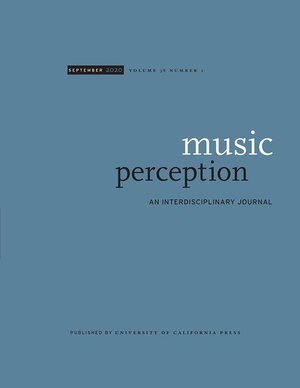
Author: Poudrier, Ève
Publication details: Music Perception: An Interdisciplinary Journal (2020) 38 (1): 27–45.
Weblink: https://online.ucpress.edu/
Abstract: The parsing of undifferentiated tone sequences into groups of qualitatively distinct elements is one of the earliest rhythmic phenomena to have been investigated experimentally (Bolton, 1894). The present study aimed to replicate and extend these findings through online experimentation using a spontaneous grouping paradigm with forced-choice response (from 1 to 12 tones per group). Two types of isochronous sequences were used: equitone sequences, which varied only with respect to signal rate (200, 550, or 950 ms interonset intervals), and accented sequences, in which accents were added every two or three tones to test the effect of induced grouping (duple vs. triple) and accent type (intensity, duration, or pitch). In equitone sequences, participants’ grouping percepts (N = 4,194) were asymmetrical and tempo-dependent, with “no grouping” and groups of four being most frequently reported. In accented sequences, slower rate, induced triple grouping, and intensity accents correlated with increases in group length. Furthermore, the probability of observing a mixed metric type—that is, grouping percepts divisible by both two and three (6 and 12)—was found to be highest in faster sequences with induced triple grouping. These findings suggest that lower-level triple grouping gives rise to binary grouping percepts at higher metrical levels.